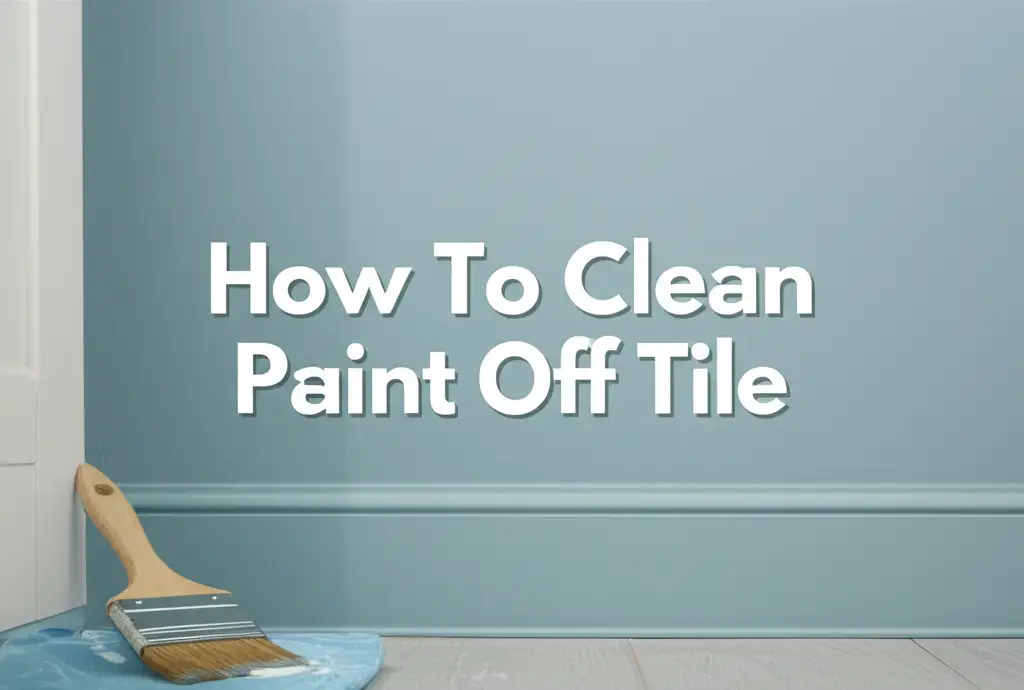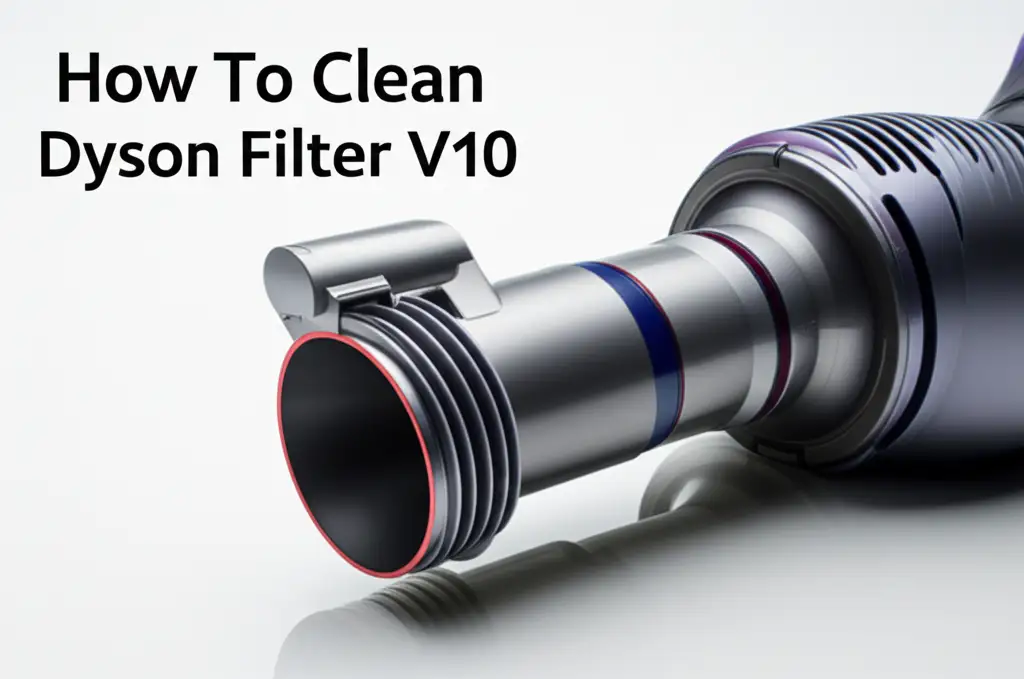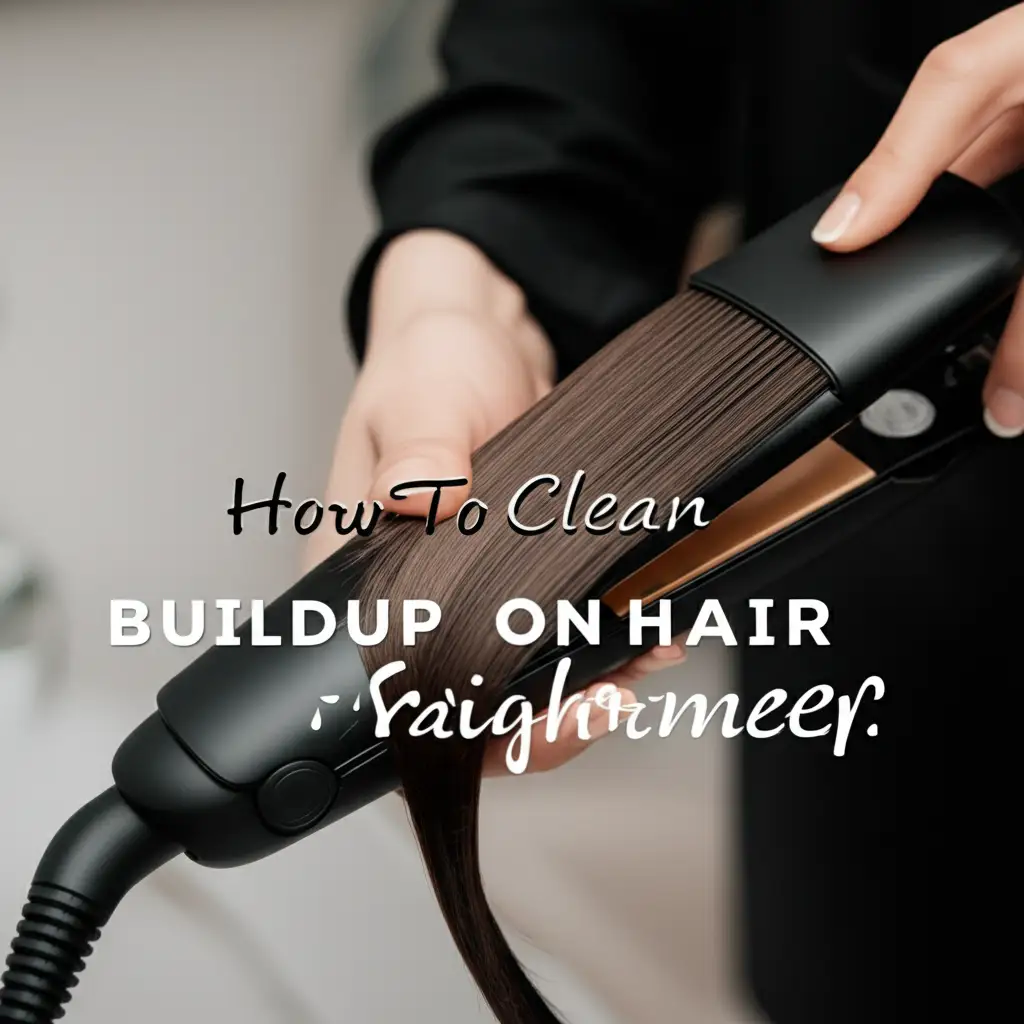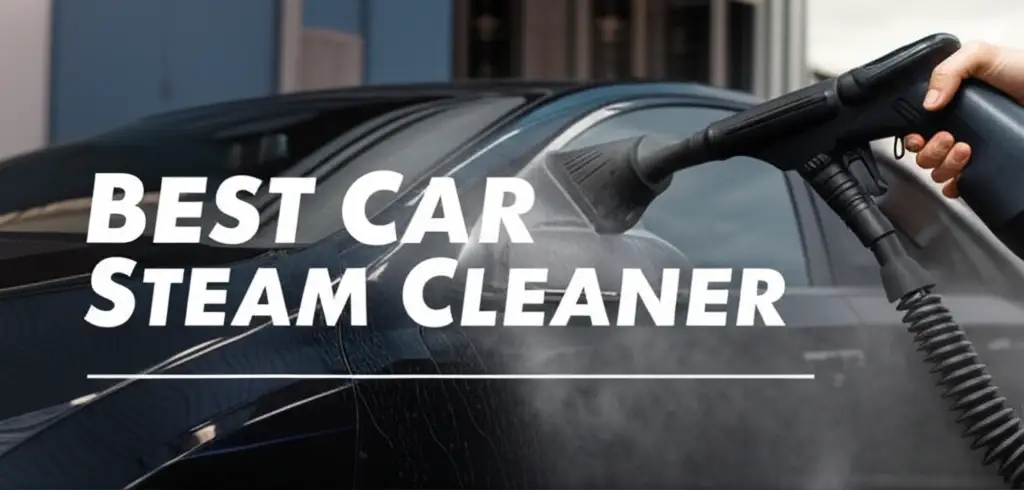· Cleaning · 15 min read
How To Clean Paint Off Tile

Easily Clean Paint Off Tile: Your Ultimate Guide
Painting a room transforms its look. It adds a fresh feel. But accidental paint spills on your beautiful tile floors or walls can be a real headache. Knowing how to clean paint off tile effectively is crucial. This helps maintain your home’s appearance. It also protects your investment.
I have faced this challenge many times. It happens during a quick touch-up or a full room makeover. Wet paint often cleans up easily. Dried paint needs more effort. Different types of paint also require different approaches. This guide explores proven methods. We cover various tile types and paint conditions. You will learn to tackle paint stains with confidence.
Takeaway
- Act fast to clean wet paint off tile using soap and water.
- For dried paint, use gentle scraping tools first.
- Match your cleaning method to the paint type (latex, oil-based).
- Always test cleaning solutions in an inconspicuous area.
- Protect natural stone tiles from harsh chemicals.
To clean paint off tile, start by identifying the paint type and its condition (wet or dry). For wet latex paint, use a damp cloth and mild soap. For dried paint, gently scrape with a plastic scraper, then use mineral spirits for oil-based paint or rubbing alcohol for latex, always testing first.
Prepare Your Workspace Before Cleaning Paint Off Tile
Before you start to clean paint off tile, proper preparation saves time. It prevents further damage. I always begin by gathering the right tools. This makes the job smoother. It also ensures safety.
First, identify the type of tile you have. Ceramic, porcelain, and glazed tiles are often very durable. Natural stone tiles, like marble or travertine, are more porous. They need gentler methods. Knowing your tile helps you choose safe cleaning agents. It prevents accidental etching or staining.
Next, ensure good ventilation in the area. Open windows and doors. This is especially important if you plan to use solvents. Solvents can create strong fumes. Good airflow protects your respiratory health. Consider wearing a mask if the fumes are particularly strong.
Gather all necessary supplies. This includes soft cloths, sponges, and buckets. You will need warm water and mild dish soap. For dried paint, prepare plastic scrapers. Old credit cards or putty knives are also useful. You might need specific paint removers or solvents later. Always read their labels carefully. Protect yourself by wearing gloves and safety glasses. These items shield your hands and eyes from chemicals. This preparation step is key for successful paint removal.
Different Paint Types: How They Impact Cleaning Tile
The type of paint on your tile matters a lot. It dictates the best cleaning method. Not all paints react the same way to cleaners. Understanding this saves you effort. It also prevents damage to your tile surface.
Latex paint is water-based. It is the easiest to clean. You can usually remove wet latex paint with just water. For dried latex, water still plays a role. Rubbing alcohol or ammonia can help break it down. These are often safer for your tiles. They work well for everyday spills.
Oil-based paint is more stubborn. It contains solvents that make it durable. This also makes it harder to remove. You cannot clean oil-based paint with just water. You will need stronger agents. Mineral spirits or turpentine are common choices. Paint thinners also work. Always use these in well-ventilated areas. They can be harsh on some tile types. Testing them in a hidden spot is important.
Acrylic paint is similar to latex but more durable. It dries quickly. It forms a strong, plastic-like film. Wet acrylic paint cleans up with water. Dried acrylic paint often needs rubbing alcohol. Sometimes, specific acrylic paint removers are needed. These removers are designed to break down the paint’s polymers. Enamel paint is very hard and durable. It often needs strong solvents. It is similar to oil-based paint in its removal process. Choose your cleaning agent based on the paint type. This ensures effective and safe paint removal.
Cleaning Wet Paint Off Tile: Act Fast for Easy Removal
When paint spills on your tile, speed is your ally. Wet paint is much easier to clean. It has not had time to bond fully with the tile surface. I always drop what I am doing to address fresh spills. This prevents major headaches later.
For wet latex or acrylic paint, grab a soft cloth or paper towels immediately. Gently blot the paint. Do not rub, as this spreads the paint. It can push it deeper into grout lines or porous tiles. Once you have absorbed most of the paint, clean the area with warm water. Add a few drops of mild dish soap to the water. This mixture helps lift remaining residue. Wipe the area thoroughly with the soapy water. Rinse the tile with clean water. Dry it with a clean cloth. This method is effective for most fresh, water-based paint spills.
If the wet paint is oil-based or enamel, the process is slightly different. Water will not work. Instead, use a cloth dampened with mineral spirits or paint thinner. Again, blot the paint, do not rub. Replace the cloth as it gets saturated. Continue until the paint is gone. After removing the paint, clean the area with soap and water to remove any solvent residue. Always ensure good ventilation when using these chemicals. Remember, acting quickly saves a lot of effort. This keeps your tiles spotless.
Effective Methods for Cleaning Dried Paint Off Tile
Dried paint on tile presents a greater challenge. It has hardened and bonded to the surface. But do not despair; several effective methods exist. I usually start with the least abrasive option. This protects your tile from scratches or damage.
Begin with gentle scraping. Use a plastic scraper, an old credit card, or a nylon brush. For tougher spots, a razor blade scraper can be used on smooth, non-porous tiles. Hold the blade at a shallow angle, almost flat against the tile. Carefully push it under the dried paint. This lifts it without scratching the tile. This method works well for small, localized drops. Be very careful if your tiles are textured. A razor blade can damage raised patterns or uneven surfaces.
If scraping alone is not enough, you might need a solvent. For dried latex or acrylic paint, try rubbing alcohol. Apply it to a cloth and dab the paint spot. Let it sit for a few minutes to soften the paint. Then, gently scrub or scrape again. You can also try a small amount of nail polish remover (acetone) on a cotton ball. Always test these in an inconspicuous area first. They can strip the finish from some tiles. For stubborn dried oil-based paint, mineral spirits or denatured alcohol are effective. Apply them similarly. They break down the paint’s chemical structure. This makes it easier to wipe away.
After using any solvent, always clean the area thoroughly with soap and water. This removes chemical residues. It leaves your tile clean and ready. You might find a combination of scraping and solvent works best. Patience is key when dealing with dried paint. For more general cleaning advice, consider learning how to clean paint off concrete or even how to clean paint off windows as some principles can overlap.
Specific Tile Types: Cleaning Paint Without Damage
Different tile materials react differently to cleaning agents. What works for one type can harm another. Understanding your tile is vital. This ensures you clean paint off tile without damage.
Ceramic and Porcelain Tiles
These tiles are generally very durable. They have a non-porous surface. Most cleaning methods are safe for them. You can use plastic scrapers or even razor blades (with care) on glazed ceramic or porcelain. Mild solvents like rubbing alcohol or mineral spirits are typically safe. Always test a small, hidden area first. Even though they are tough, some glazes can react to harsh chemicals. A good follow-up wash with soap and water is important. This removes any chemical residue. For stubborn spots, consider how to clean thinset off tile methods, as some principles for tough residue removal can apply.
Natural Stone Tiles (Marble, Travertine, Slate, Granite)
Natural stone is porous and sensitive. It is very susceptible to etching from acids. Bleach, vinegar, and acidic cleaners should be avoided. These can permanently damage the stone’s surface. For paint removal, start with gentle scraping. Use a plastic scraper only. For dried paint, a small amount of mineral spirits or denatured alcohol on a cloth is often safe. Apply it sparingly. Do not let it sit for long. Immediately wipe the area clean with water. Then, dry it with a soft cloth. Harsh paint strippers are generally not recommended for natural stone. They can penetrate the pores and cause permanent stains or damage. If you need to clean other tough residues, consider methods for how to clean caulk off tile or how to clean mortar off tile as they often involve gentler, mechanical approaches or specialized cleaners for stone.
Glazed vs. Unglazed Tiles
Glazed tiles have a protective, often shiny, top layer. This makes them less porous. They are easier to clean. Most methods described above are suitable for glazed tiles. Unglazed tiles are more porous. They can absorb liquids easily. This means paint can soak in deeper. For unglazed tiles, act even faster with wet paint. For dried paint, use less solvent. Apply solvents sparingly. Ensure good ventilation. Clean quickly to prevent absorption. Always rinse thoroughly to remove all cleaning agents. This prevents new stains.
Eco-Friendly Ways to Clean Paint Off Tile
I prefer eco-friendly solutions whenever possible. They are safer for my home. They are also better for the environment. Many common household items can effectively clean paint off tile. These methods reduce the need for harsh chemicals.
One popular eco-friendly option is white vinegar. Vinegar is mildly acidic. This helps to break down dried latex or acrylic paint. I usually warm up some white vinegar slightly. Then, I soak a cloth in it. I place the soaked cloth over the dried paint spot. I let it sit for about 15-30 minutes. The vinegar softens the paint. After soaking, I can often scrape the paint off with a plastic scraper. Always rinse the area thoroughly with water after using vinegar. This is especially important on natural stone tiles. Vinegar can etch stone if left too long.
Rubbing alcohol is another great alternative. It works well on many types of dried paint, especially latex and acrylic. Apply rubbing alcohol to a clean cloth. Rub the paint spot in small circular motions. You will see the paint start to dissolve. For stubborn spots, let the alcohol sit on the paint for a few minutes. Then, gently scrub or scrape. Rubbing alcohol evaporates quickly. It usually leaves no residue. It is generally safe for most ceramic and porcelain tiles.
For very fresh, small paint splatters, warm soapy water is your best friend. A few drops of mild dish soap in warm water can lift wet or slightly damp latex paint. Just wipe the area with a sponge soaked in the solution. This is the simplest and safest method. It works wonders if you catch the spill immediately. These eco-friendly methods are a good starting point. They help to protect your home and the planet.
When to Call a Professional for Tile Paint Removal
Sometimes, a paint removal job is beyond DIY capabilities. Knowing when to call a professional saves you time and prevents potential damage. I understand the desire to handle everything yourself. However, some situations truly require expert help.
One clear sign is extensive paint coverage. If a large area of your tile is covered in thick, dried paint, professional help is wise. This is especially true for oil-based or epoxy paints. These paints are notoriously hard to remove. Attempting to clean such a large area manually is exhausting. It might also lead to inconsistent results. A professional has the right tools and expertise. They can cover large areas efficiently.
Another reason is delicate or expensive tile. Natural stone tiles, like marble or travertine, are easily damaged. Harsh chemicals can etch them. Aggressive scraping can scratch them. If you have valuable antique tiles or very porous stone, a professional is a safer bet. They understand the nuances of different materials. They know specific techniques that preserve the tile’s integrity. Their methods are tailored to avoid harm.
Finally, if you have tried basic methods and the paint remains, consider professional help. Stubborn stains can be frustrating. Over-scrubbing or using incorrect chemicals can make the problem worse. It might even embed the paint further. Professionals use specialized solvents and equipment. They have access to solutions not available to the average consumer. They can often remove paint that seems impossible to clean. Investing in professional service can save your tiles. It ensures a perfect finish.
Preventing Paint Spills on Tile: Best Practices
Prevention is always better than cure. This is especially true when painting around tile. A few simple steps can save you hours of cleaning. I always take these precautions. They make my painting projects much less stressful.
First, invest in good quality drop cloths. Heavy-duty canvas drop cloths are ideal. They are thick and absorb spills. Plastic sheeting also works well. Make sure the drop cloths completely cover your tile floors. Extend them several inches past the edges of your painting area. This provides a generous buffer. Secure the drop cloths with painter’s tape. This prevents them from shifting. Shifting cloths can expose your tile to drips. Painter’s tape also helps to create clean lines.
Next, tape off all tile edges and grout lines adjacent to your painting area. Use high-quality painter’s tape. Press it down firmly. This creates a clean, protective barrier. It prevents paint from seeping under the tape onto the tile or grout. I sometimes use a double layer of tape for extra protection. This is especially important if you are using a roller. Rollers can splatter paint easily. Taping off ensures any drips hit the tape, not the tile.
Lastly, be mindful of your paint tools. Avoid overloading your brush or roller. This reduces drips and splatters. Always wipe excess paint from your brush on the edge of the can. Use a paint tray with a grid to remove extra paint from rollers. Keep a wet rag or paper towels nearby. You can quickly wipe up any small, fresh drips. Prompt cleanup of wet paint is easy. This proactive approach significantly reduces paint spills. It keeps your tiles pristine.
FAQ Section
Can I use a paint stripper on tile?
Using strong paint strippers on tile is generally not recommended. They contain harsh chemicals that can damage tile glazes. They can also etch natural stone surfaces. Always test a small, hidden area first if you must use one. Consider gentler alternatives like rubbing alcohol or mineral spirits instead.
How do I clean paint off tile grout?
Cleaning paint off grout can be tricky due to its porous nature. For wet paint, scrub with a stiff brush and soapy water. For dried paint, use a plastic brush or old toothbrush with a mixture of baking soda and water. You can also try a small amount of mineral spirits for oil-based paint, but test first. Gently scrub the affected grout lines.
Is vinegar safe for cleaning paint off all tile types?
Vinegar is safe for ceramic and porcelain tiles. It can help loosen latex paint. However, you should avoid using vinegar on natural stone tiles. Its acidic nature can etch and dull the surface of marble, travertine, or limestone. Always test on an inconspicuous area, especially for delicate or unglazed tiles.
What if the paint is oil-based?
Oil-based paint needs solvents for effective removal. Mineral spirits, paint thinner, or denatured alcohol are good choices. Apply the solvent to a cloth. Blot the paint spot, allowing the solvent to soften it. Then, gently scrape or wipe it away. Always use these in a well-ventilated area and wear gloves.
How do I remove paint spots from textured tile?
Removing paint from textured tile requires patience. Avoid razor blades, as they can damage the texture. Instead, use a stiff nylon brush, an old toothbrush, or a plastic scraper. Apply a suitable solvent (rubbing alcohol for latex, mineral spirits for oil-based). Let it soak. Then, scrub gently into the textured surface to lift the paint.
What about using heat to remove dried paint?
Heat can sometimes help soften dried paint for easier scraping. You can use a heat gun or a hairdryer on a low setting. Apply heat briefly to the paint spot. Then, immediately try to scrape the softened paint with a plastic scraper. Be cautious not to overheat the tile, especially around grout, as excessive heat can cause damage.
Conclusion
Accidental paint spills happen. But knowing how to clean paint off tile makes all the difference. We have explored various methods today. We covered cleaning wet paint, tackling dried paint, and addressing different tile types. We also discussed eco-friendly options and preventative measures.
Remember, acting quickly on wet spills is your best defense. For dried paint, start with gentle scraping. Then, use appropriate solvents, always testing in a hidden area first. Your tile type dictates the safest cleaning agent. Always prioritize gentle methods, especially for natural stone. With these tips, you can keep your tile surfaces spotless. You can confidently tackle any paint spill. Keep your home looking its best. Do you have a stubborn paint stain you need help with? Share your experiences and questions below.
- paint removal
- tile cleaning
- DIY cleaning
- paint spills
- floor care




